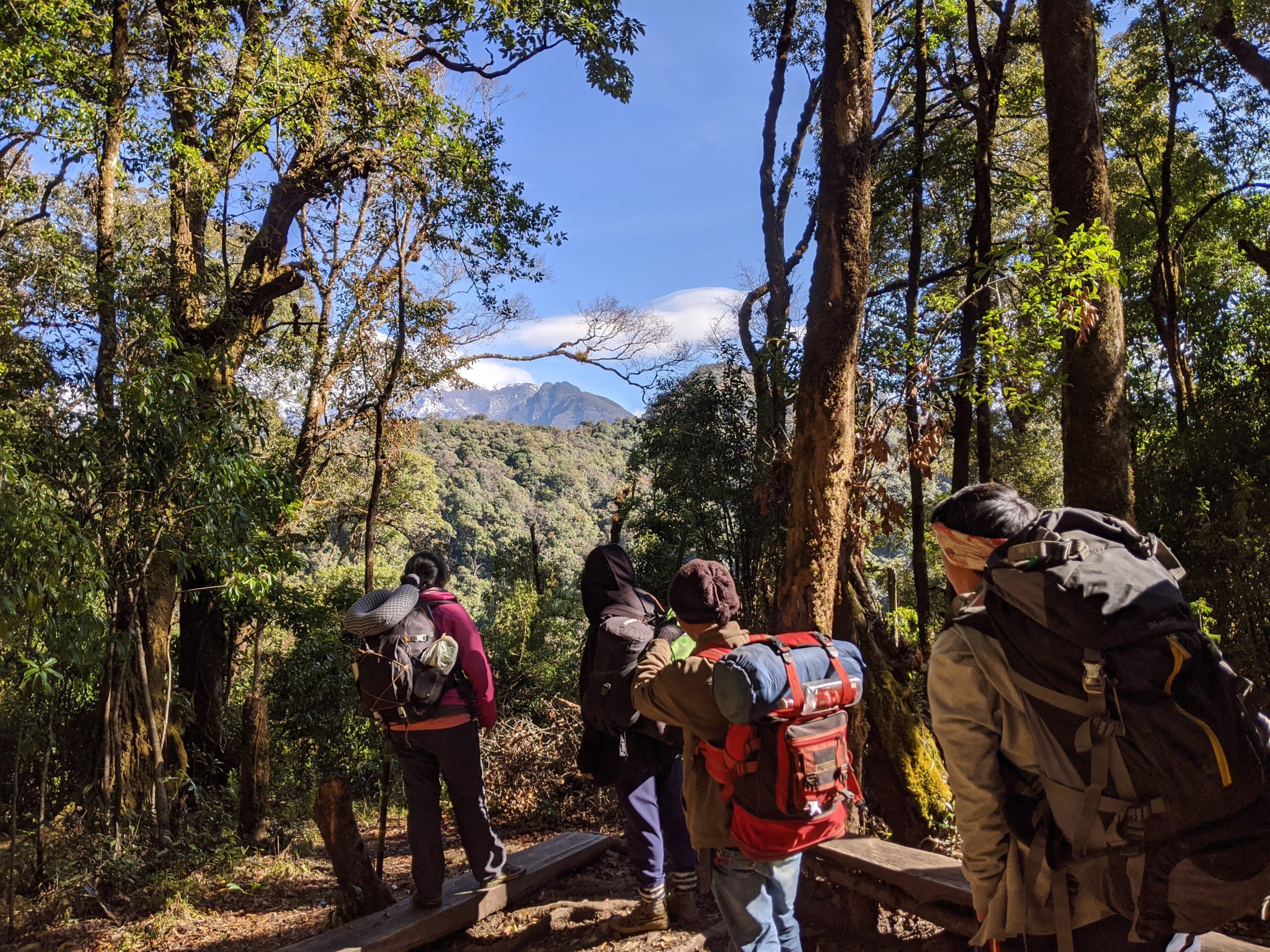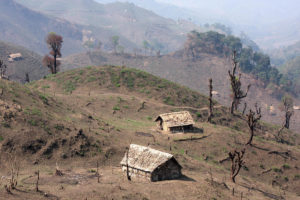On 26 July, 2023 the lower house of the Indian parliament, amidst protests, passed a bill to amend the country’s 1980 Forest Conservation Act (FCA). The FCA was originally enacted to regulate industrial uses for forested land, such as mining or hydropower, and to put a price on such exploitation. The bill will now have to be passed in the Rajya Sabha, or upper house of Parliament, to become an act. If it does, it will alter how this land is defined and used, via a joint committee almost entirely comprising governing party members.
Unsurprisingly, concern is growing among environmentalists and indigenous communities.
The amendment’s changes
The Forest (Conservation) Amendment Bill 2023, as introduced, concerns land that was defined as forest under either the colonial-era Indian Forest Act of 1927, which contained procedures to define forests as ‘protected’ or ‘reserved’, or in government records created after the 1980 FCA came into effect.
There is no legislatively defined definition of forests in India. The country’s supreme court uses the dictionary definition of the term, stating that all forests – whether designated or not – come under the scope of the FCA. This was most clearly stated in the Godavarman Judgment of 1996, which read: “The provisions enacted in the Forest Conservation Act, 1980 for the conservation of forests and the matters connected therewith must apply clearly to all forests so understood irrespective of the ownership or classification thereof.”
The new bill travels in the exact opposite direction of the Godavarman Judgment. This means private forest land and any parcels of land that are forested – but not recorded as such in government records – will lose FCA protection.
Most prominently, “linear projects” – such as railway tracks, transmission lines and highways – that are of “national importance and concerning national security”, will be exempt from forest conservation scrutiny if they fall within 100km of India’s border. Such exemptions will also apply to defence projects, paramilitary camps and public utility projects, the last of which remain undefined.
Losing FCA protection means such lands will no longer be subject to pre-clearance checks, for example seeking consent from indigenous inhabitants, or making provisions for destroyed ecosystems.
The bill also opens up forests for activities such as eco-tourism zones and zoos. While India does have a policy on sustainable ecotourism, in reality, research suggests that “forest loss rates were higher in ecotourism hubs than in matched non-ecotourism areas.”
Opposition to the amendment
Those contesting the amendments include government opposition party members, ex-Indian Administrative Service and Indian Foreign Service officials, and environmentalists and activists, for a variety of reasons.
The Third Pole spoke to Asad Rahmani, the former director of the Bombay Natural History Society. Rahmani says skipping government or court approval for development projects in forests that lie within 100km of India’s national border is “very dangerous”; Rahmani points out that “a large portion of our country will come within 100km of the border.” India’s borders stretch to 15,106.7km across land and its coastline covers 7,516.6km, including island territories.
Kanchi Kohli, who researches legal issues and policies and wrote Development of Environmental Laws in India, told The Third Pole that the amendments fail to see the bigger picture: “While the political security concerns of border areas cannot be undermined, a progressive way to understand both internal and external security is by also including ecological and social challenges within the framework. This is particularly important in the context of climate change and [the] biodiversity crisis that has induced transboundary disasters.” Kohli says bilateral and multilateral agreements are necessary to address these challenges.
Meanwhile, Debadityo Sinha – the climate and ecosystems lead at the Vidhi Centre for legal policy – is concerned about the amendment’s planning concessions for “public utilities”. Sinha says the term is too expansive: “The broader understanding of public utilities can cover a range of projects, right from banks, hospitals and parking lots, to airports.”
Concerns over private forests
In its submission to the joint parliamentary committee, the Himachal Pradesh-based advocacy group Himdhara highlighted how the process of recording land remains fraught with irregularities in many Himalayan states. This includes Himachal where, due to colonial-era land transference, more than 50% of the land belongs to private individuals.
There needs to be a detailed understanding […] of the probable conflicts that will be heightened if those who are so-called ‘owners’ of these forests are given a free hand to erect structuresHimdhara, environmental advocacy group
Himdhara’s submission calls for an environmental study, stating: “Before changing application of the FCA on private and deemed forests [areas that look forested but are not classified as such], there needs to be a detailed understanding [of] the socio-economic and ecological services these private and deemed forests play in different contexts and the probable conflicts that will be heightened if those who are so-called ‘owners’ of these forests are given a free hand to erect structures.”
Development versus climate compliance
In a press release issued on 18 July, several activist and campaign groups outlined their opposition. These included the indigenous research and advocacy group, Dibang Arunachal Pradesh. Its co-founder Bhanu Tatak says the bill will lead to widespread road-building through critical forests: “Our border areas encompass some of the most biodiversity-rich forests and protected areas in northeast India.”
The biodiversity of India’s border lands incorporates endemic species of flora and fauna, as well as endangered species including great Indian bustards, red pandas, snow leopards, Kashmir stags, Tibetan antelopes, markhors and hoolock gibbons.
Indigenous people and village councils excluded
The FCA’s forest clearance processes currently include fulfilling mandates limiting pollution and degradation, as well as ensuring there is no conflict over the usage of the land in question. To facilitate this process, it is divided into two stages, one of which requires the consent of residents on forest lands. By exempting large tracts of lands from this process, the new bill removes this consent, even though indigenous communities on forest land are legally entitled to it in the 2006 Forest Rights Act.
The amendment does not mention gram sabhas (elected village councils) or indigenous people, nor does it provide measures to include them in forest clearance processes. India’s northeastern indigenous communities, including those in Arunachal Pradesh, have protected these forests for eons. “We will not let India’s elected representatives destroy our ecological heritage,” says Tatak.
Why are Himalayan states at greater risk?
As in previous years, massive flooding and landslides have gripped India’s mountainous states in 2023, such as Uttarakhand and Himachal Pradesh. As climatic changes intensify, bringing greater heat waves and more extreme rainfall to the Himalayan regions, the FCA amendments have important implications for the environmental resilience of these areas.
The Forest Survey of India’s India State of Forest Report 2021 looked at ‘climate hotspots’ in forests for the first time. These were defined as areas exhibiting high variations in both temperature and precipitation. Unsurprisingly, the Himalayan provinces of Jammu and Kashmir, Himachal Pradesh, Uttarakhand, Sikkim and Arunachal Pradesh were all found to have very high incidences of climate hotspots. These are also the states that abut disputed borders with China and Pakistan, which run a total of approximately 4,000km and 750km along the Himalayan region.
In exempting ‘linear projects’ within 100km of these disputed borders from forest laws, this new bill seeks to exempt critical forested areas – which the state itself has identified as climate hotspots – from conservation oversight.
The Indian Himalayas are part of two global biodiversity hotspots, Himalaya and Indo-Myanmar, which inspired India’s National Mission for Himalayan biodiversity and makes them integral to the National Action Plan for Climate Change. Critics of the FCA’s amendment say it is incompatible with the stated aims of these missions.
The National Mission for Sustaining the Himalayan Ecosystem (NMSHE) was identified as one of India’s eight national missions when its National Action Plan on Climate Change launched in 2008.
It places a special emphasis on the Himalayas, considering its fragile ecology and biodiversity.
The mission recommends undertaking rigorous scientific studies in order to assess the health of the mountain systems, as well as developing research to frame evidence-based policy measures.
The NMSHE also recommends preparing “time-bound” action plans at the state level.
India is a signatory to the Global Biodiversity Framework and is home to 8% of global biodiversity, four cross-border global biodiversity hotspots, and is considered to have a high degree of species endemism. Sinha insists that the FCA’s regulatory oversight is essential in India’s wildlife-rich border areas: “If a species is endemic to a region, then the divisional forest officer – a senior official responsible for looking after and managing forests in a particular district – prepares a report and sends it to the [environment] ministry. If areas are excluded carte blanche, anything can be constructed.”










